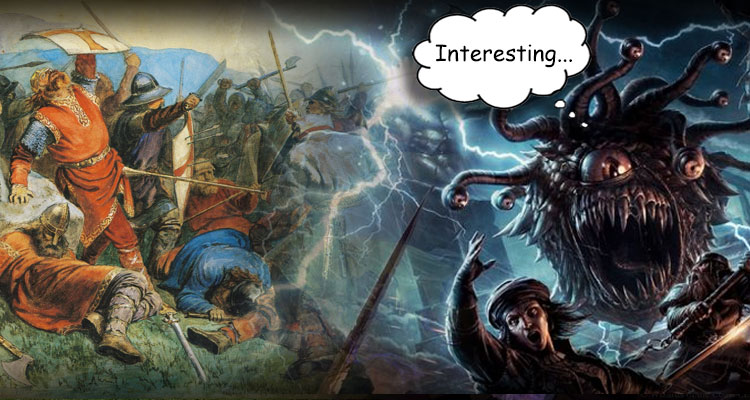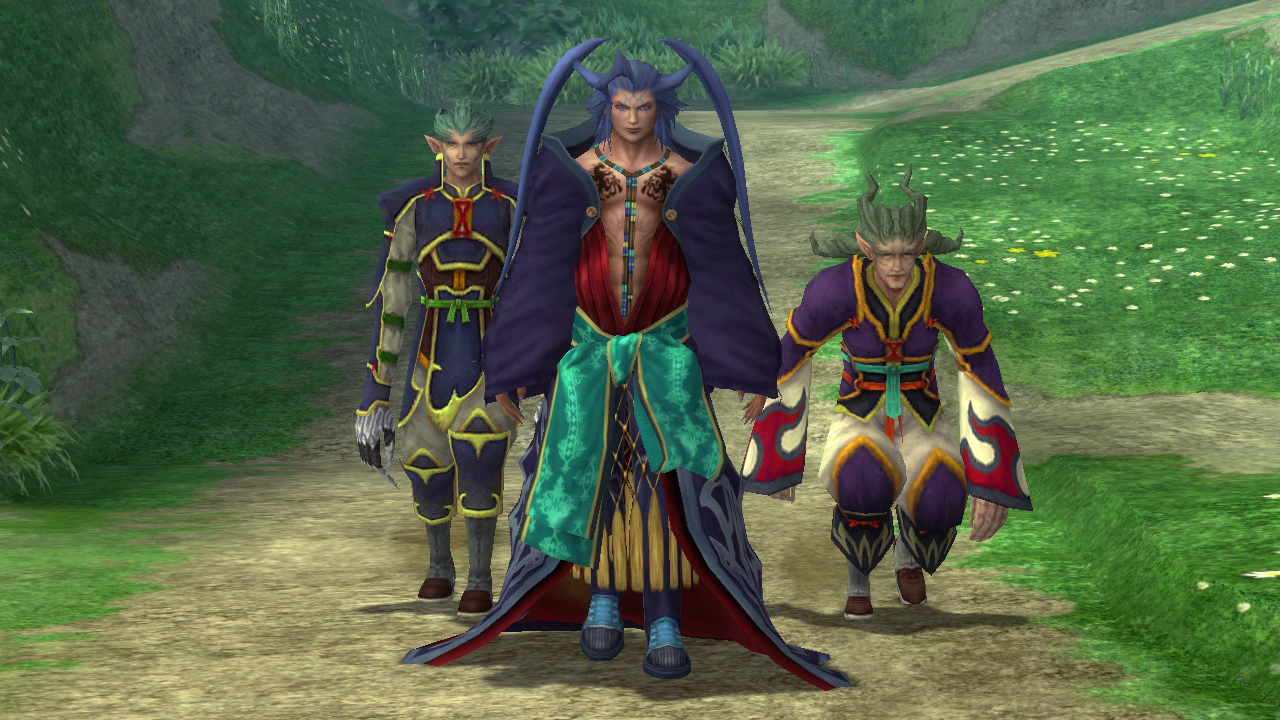This is part 3 of the Making Combat Interesting series. You can find part 1: Objectives & Terrain Design here, and part 2: Resources & Mechanics Modifiers here.
Enemy Relationships
The last component in creating interesting combat encounters is unique enemy relationships. The idea here is simple: the entirety of an encounter’s enemy force is greater than the sum of its parts. Let’s get into it.
It isn’t hard to find an enemy that has unique and interesting abilities. It’s more difficult to find several enemies that work together to create a unique and interesting team. Most of the time, these enemies will be found in the same section of the Monster Manual or other enemy directory. For example, Orcs in D&D 5e have several abilities that let their chieftains buff their lower CR minions.
To create our own interesting enemy relationships, we first have to choose whether we want the enemy group to complement each other or supplement each other, or both.
Complementary Relationships
A group has a complementary relationship if their strengths overlap each other’s weaknesses. It’s essentially having a ‘balanced’ team in which the members can play off each other to overcome a wide array of obstacles that they wouldn’t be able to overcome alone.
A classic example of this is the iconic D&D party, which consists of a fighter, a cleric, a rogue, and a wizard. The strength of this party isn’t in the classes, but more in the roles each class fills that complements the others:
- The fighter acts as a tank and damage dealer
- The cleric acts as a healer and secondary spell caster
- The rogue acts as a utility character and secondary damage dealer
- The wizard acts as the primary spellcaster
Designing an enemy group by role is an excellent way to create an interesting and challenging combat encounter. A fascinating encounter that comes to my mind is the first fight with Seymour Guado from Final Fantasy X. He fights the player’s team with two Guado Guards who cast protection on themselves; greatly reducing physical damage taken. Seymour starts off by casting Shell, which reduces magical damage taken.
During the battle, the guards will cover Seymour from incoming physical attacks, and follow up by using Hi-Potions to heal themselves. Meanwhile, Seymour casts spells from the back, damaging the player’s lineup. The fight is interesting because it forces the player to do two things: prioritize killing the guards in order to get to Seymour, and deal more damage with each attack than the guards can heal (they only heal when damage is taken, not when they are below max hit points).
The enemies complement each other very well since Seymour is susceptible to physical attacks, and any attempt to touch him result in his Guards soaking up the physical damage -which is reduced thanks to their protection spell from Seymour and using Hi-Potions to bring back their HP.
When you want an encounter that’s more than just a race to reduce enemy hit points, find or invent ways that the enemies can complement each other.
Supplementary Relationships
Enemies supplement each other when their strengths overlap, creating an even greater version of themselves. A supplementary group of enemies isn’t about balance, it’s about extremes. If you thought the Hill Giant alone was bad, wait until it’s buddy gives it a boost of strength. Enemy archers are annoying, but when the Captain gives his allies an advantage on ranged attack rolls, they become a serious threat.
In one game I was running, the players had to fight through a hatchery of large insects. The drones were generally weak and easy targets, but every time another one emerged from the hive, all the drones gained a +1 to their attack and skill rolls. The idea was that they became smarter and more coordinated as their numbers grew, simulating a “hive-mind” effect. The weak insects quickly became a serious threat as their abilities stacked.
Supplementary enemy groups make interesting encounters, with less work and effort than a complementary group. All you need to do is invent ways of making enemies better at what they are already good at.
Bringing it All Together
Here are two examples of how to use terrain, objectives, resources, mechanics, and enemy relationships to make unique and interesting encounters.
Simple Example
Phyrx is a demon lord who’s turned the dungeon below the Skywatch Tower into its spawning lair. In its chambers are spawning pools that create difficult terrain, but also grant creatures in their aura an immunity to fire damage. This is good because Phyrx will sling multiple fire attacks at the adventurers each turn.
The spawning pools are not immune to the attacks of Phyrx, and have 0 AC and 25 HP. If a spawning pool is destroyed, the aura dissipates and a Spawn of Phyrx emerges from the pool to attack the adventurers. Spawning a minion in this way is draining for Phyrx, however, and if the Spawn is killed, Phyrx takes substantial damage.
Complex Example
Prophets are spirit-like creatures who do not attack, move, or take any actions. Instead, they meditate on the future of the battle. Each turn there is a 50% chance that one or two Prophets can appear in a number of places in the battlefield. When they appear, the players have two turns to destroy them. If they are not destroyed, the Prophets disappear and all players are Marked for Execution: receiving disadvantage on all saves until the mark is removed.
There is a cleansing well in the center of the battlefield. When entered, it removes the Mark from a character, but only two marks can be removed per round; then the well must recharge.
Each turn, the Executioner rolls a d6. On a 5-6, it performs the Ritual of Execution. Any character Marked must make a constitution save. On a failed save, the player is reduced to 0 hit points. The Executioner cannot perform the ritual two turns in a row.
Whether used individually or mixed together, these principles can create unique encounters that players will remember. What kind of unique encounters can you think up? Let us know in the comments!



